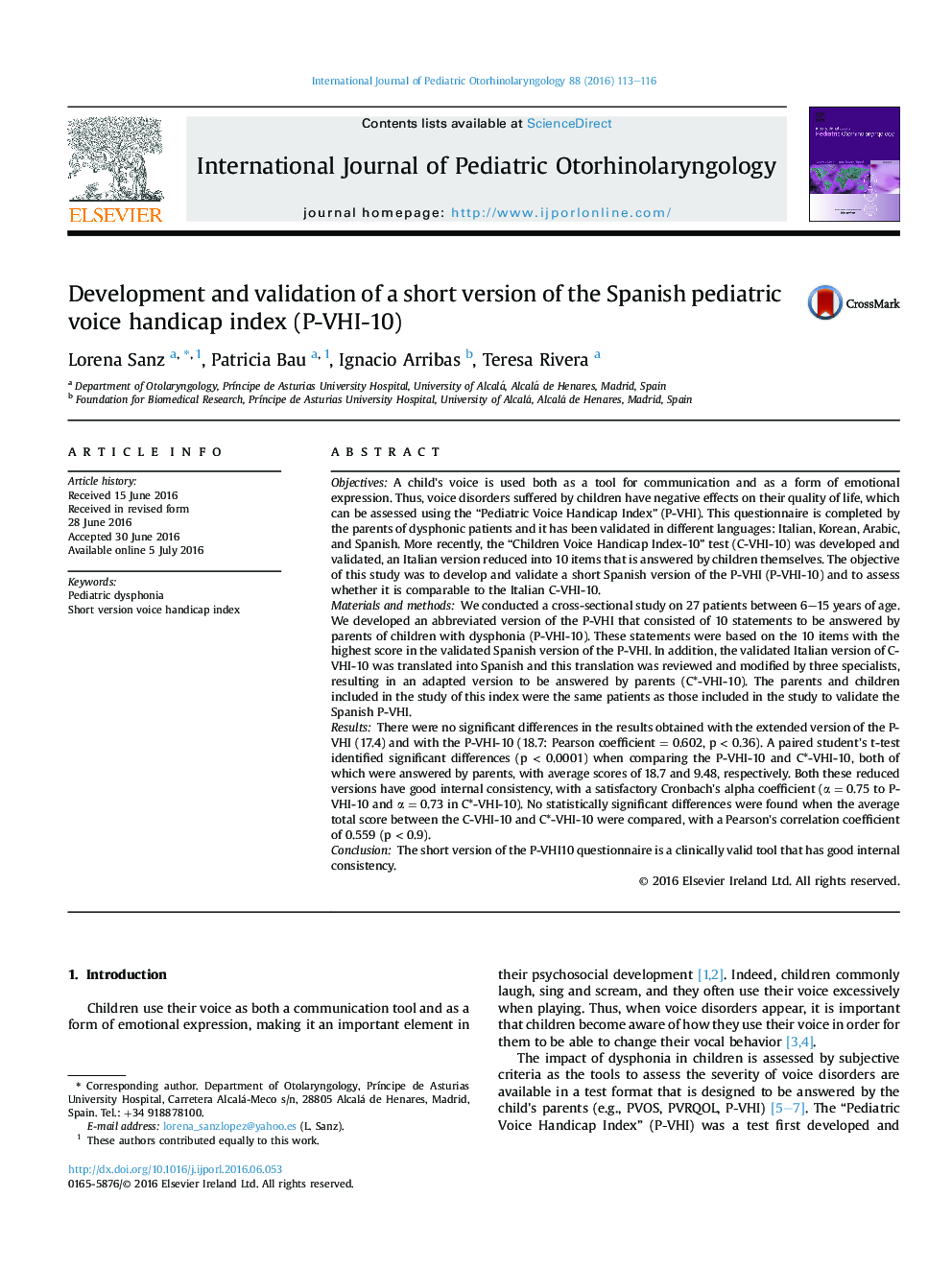| Article ID | Journal | Published Year | Pages | File Type |
|---|---|---|---|---|
| 4111397 | International Journal of Pediatric Otorhinolaryngology | 2016 | 4 Pages |
ObjectivesA child's voice is used both as a tool for communication and as a form of emotional expression. Thus, voice disorders suffered by children have negative effects on their quality of life, which can be assessed using the “Pediatric Voice Handicap Index” (P-VHI). This questionnaire is completed by the parents of dysphonic patients and it has been validated in different languages: Italian, Korean, Arabic, and Spanish. More recently, the “Children Voice Handicap Index-10” test (C-VHI-10) was developed and validated, an Italian version reduced into 10 items that is answered by children themselves. The objective of this study was to develop and validate a short Spanish version of the P-VHI (P-VHI-10) and to assess whether it is comparable to the Italian C-VHI-10.Materials and methodsWe conducted a cross-sectional study on 27 patients between 6–15 years of age. We developed an abbreviated version of the P-VHI that consisted of 10 statements to be answered by parents of children with dysphonia (P-VHI-10). These statements were based on the 10 items with the highest score in the validated Spanish version of the P-VHI. In addition, the validated Italian version of C-VHI-10 was translated into Spanish and this translation was reviewed and modified by three specialists, resulting in an adapted version to be answered by parents (C*-VHI-10). The parents and children included in the study of this index were the same patients as those included in the study to validate the Spanish P-VHI.ResultsThere were no significant differences in the results obtained with the extended version of the P-VHI (17.4) and with the P-VHI-10 (18.7: Pearson coefficient = 0.602, p < 0.36). A paired student's t-test identified significant differences (p < 0.0001) when comparing the P-VHI-10 and C*-VHI-10, both of which were answered by parents, with average scores of 18.7 and 9.48, respectively. Both these reduced versions have good internal consistency, with a satisfactory Cronbach's alpha coefficient (α = 0.75 to P-VHI-10 and α = 0.73 in C*-VHI-10). No statistically significant differences were found when the average total score between the C-VHI-10 and C*-VHI-10 were compared, with a Pearson's correlation coefficient of 0.559 (p < 0.9).ConclusionThe short version of the P-VHI10 questionnaire is a clinically valid tool that has good internal consistency.
